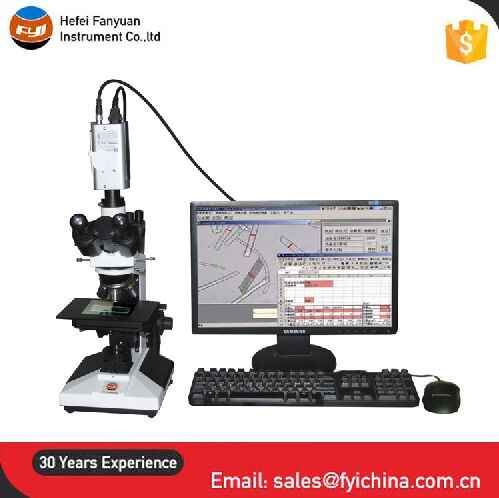Innovations in Optical Fibre Diameter Analyser Measurement Tools
Innovations in Optical Fibre Diameter Analyser Measurement Tools
Blog Article
Unlock Accuracy: The Ultimate Overview to Optical Fibre Size Analyser Devices
Exact dimension of optical fiber diameter is vital for boosting the efficiency and dependability of fibre optic systems. As we take a look at these tools, it becomes evident that the future of optical fiber analysis is advancing quickly, raising inquiries regarding how these advancements will influence the market.
Value of Optical Fiber Dimension
Accurately measuring optical fibre diameter is essential in guaranteeing optimal efficiency and integrity in communication systems. The diameter of optical fibres directly impacts their light transmission abilities, affecting transmission capacity, attenuation, and overall signal honesty. A specific measurement is vital to preserve the preferred specifications for numerous applications, consisting of telecoms, data transmission, and noticing technologies.
Incorrect or irregular fibre diameters can result in increased losses and reduced efficiency, eventually jeopardizing the efficiency of the entire communication network. In addition, variations in diameter can trigger troubles in splicing and connecting fibers, causing higher functional prices and prospective system failures. Carrying out rigorous dimension methods is essential.

Kinds Of Size Analyser Tools
To attain reputable optical fibre dimensions, different diameter analyser tools are utilized, each created to accommodate specific dimension requirements and applications (optical fibre diameter analyser). These tools can be generally categorized into three major kinds: manual, semi-automated, and totally automated analyzers
Manual diameter analyzers are typically utilized in smaller sized procedures or research laboratories where accuracy is called for but production volume is low. They provide operators straight control over the dimension process, enabling for cautious modifications and confirmations.
Semi-automated diameter analyzers boost effectiveness by combining hand-operated input with automated features. These devices typically consist of user-friendly user interfaces that improve the dimension process while still permitting operator oversight.
Totally automated size analyzers represent the peak of measurement innovation. These innovative systems integrate sophisticated sensing units and software program to offer real-time dimensions with minimal user treatment. They are ideal for high-volume manufacturing settings, making certain constant accuracy and fast data collection.
Each sort of size analyser offers distinct functional demands, making it essential for users to carefully review their certain requirements when choosing the proper device for optical fibre measurement.
Secret Attributes to Think About
When choosing an optical fiber diameter analyser, numerous vital features warrant careful factor to consider to guarantee optimal efficiency and dependability. First, measurement precision is critical; seek tools that provide high-resolution readings, ideally in micrometers, to guarantee precision in diameter assessment. Furthermore, the speed of dimension is important, particularly in manufacturing settings where efficiency is vital.
An additional vital function is the calibration process, as a reliable analyser ought to provide straightforward calibration procedures to preserve dimension stability in time. The variety of diameters the tool can gauge is additionally substantial; make sure that it accommodates the specific fiber kinds relevant to your applications.
Transportability could be a consideration, especially for fieldwork; light-weight and portable designs improve use in different settings. Furthermore, user-friendly user interfaces and software compatibility can facilitate smoother operation and information evaluation.
Lastly, think about the support and service warranty offered by the maker; trusted consumer solution and comprehensive guarantee choices can protect your financial investment and guarantee lasting contentment. By focusing on these functions, you can select an optical fiber size analyser that meets your specific requirements and boosts your functional capabilities.
Ideal Practices for Use
Effective usage of optical fiber size analysers depends upon a complete understanding of ideal practices that improve measurement integrity and precision. Ensure that the analyser is calibrated correctly prior to each use. Calibration versus understood standards mitigates possible errors and establishes a standard for succeeding dimensions.
2nd, keep a tidy environment. Dust, wetness, or contaminants on the news fiber or the analyser's lenses can skew results. Frequently evaluate and clean up both the fiber and the equipment to preserve ideal performance.

Additionally, conduct measurements at consistent temperature levels and moisture degrees, as ecological aspects can affect results. File each measurement thoroughly, noting conditions and any abnormalities encountered throughout the process.
Future Patterns in Optical Fiber Analysis
As the demand for high-performance optical fibres continues to rise, innovations in analysis methods are readied to transform the market (optical fibre diameter analyser). Future trends in optical fibre analysis will likely be driven by enhanced automation and the integration of artificial knowledge (AI) and artificial intelligence (ML) technologies. These innovations assure to boost data precision, decrease evaluation time, and enable real-time tracking of fibre quality
In addition, the development of portable and straightforward evaluation devices will certainly help with on-site evaluations, enabling greater flexibility and performance in production settings. Improved imaging technologies, such as high-resolution imaging and spooky evaluation, are anticipated to supply deeper understandings right into fiber qualities, making it possible for makers to enhance their processes better.
Moreover, as markets significantly accept sustainability, there will certainly be a press for green products and methods in optical fiber manufacturing. This change will require brand-new analytical strategies to analyze the performance and longevity of these materials under varying conditions.
Conclusion
Accurate measurement of optical fibre diameter is essential for enhancing efficiency and making certain reliability in interaction systems. Continued development will certainly even more boost the precision and next page efficiency of web optical fibre evaluation.
Exact measurement of optical fibre diameter is necessary for improving the efficiency and reliability of fibre optic systems. In a progressively linked world, where high-speed data transmission is paramount, the duty of accurate optical fiber diameter dimension can not be overemphasized, as it serves as the foundation for durable interaction framework.When picking an optical fiber diameter analyser, several crucial functions require careful consideration to ensure ideal efficiency and reliability.Reliable use of optical fibre diameter analysers pivots on an extensive understanding of finest methods that boost measurement reliability and accuracy.Precise measurement of optical fiber size is important for optimizing performance and guaranteeing integrity in communication systems.
Report this page